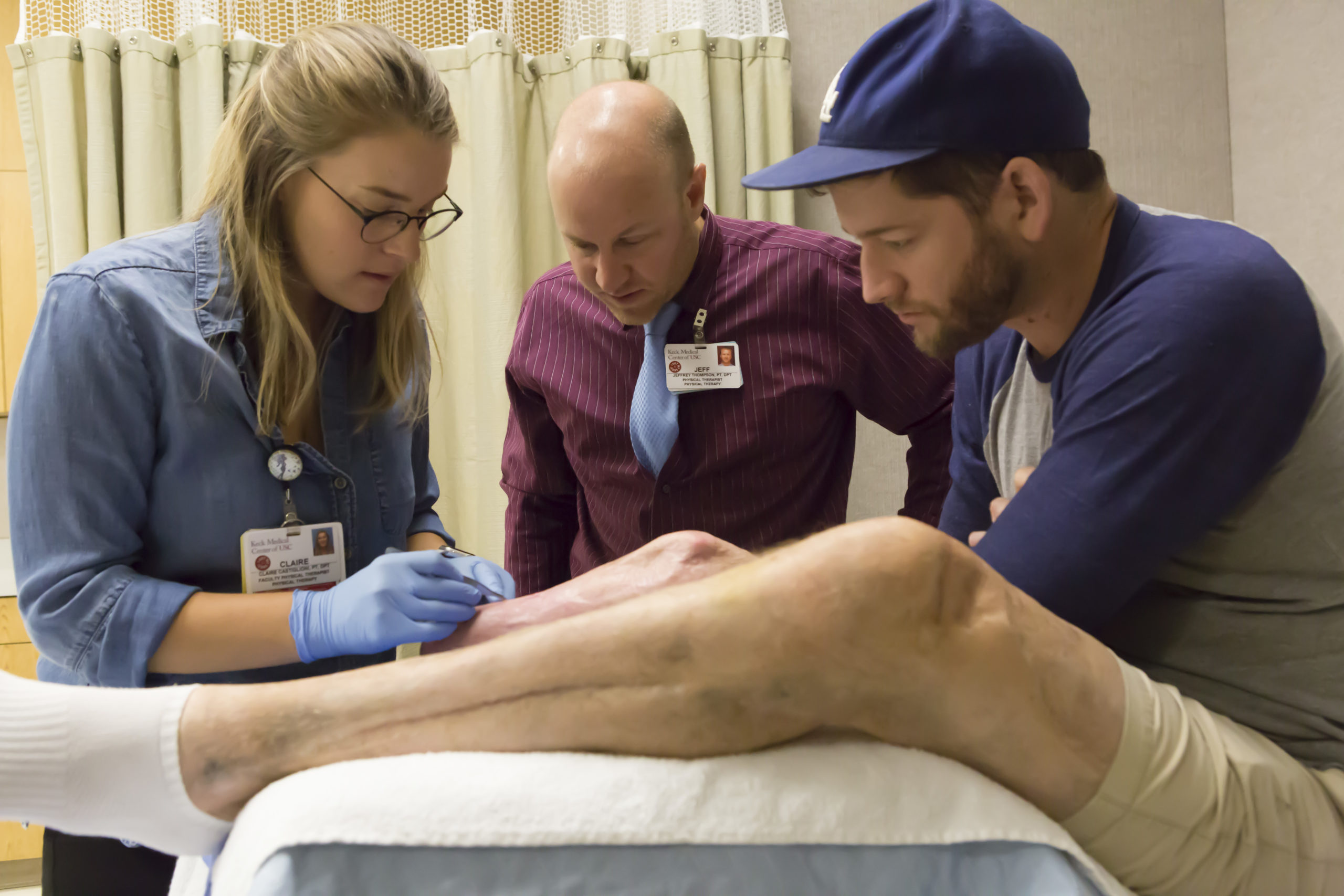RESEARCH

MUSCULOSKELETAL BIOMECHANICS & REHABILITATION
Musculoskeletal biomechanics aims to understand the effects of age, activity, disease and various pain states, including acute, chronic and recurrent conditions. A broad range of methods and experimental conditions are used to study movement strategies and function. Our translational work advances the development and assessment of intervention strategies for musculoskeletal rehabilitation and performance enhancement.
SUBTOPIC AREAS
- SPORTS AND INJURY BIOMECHANICS
Identify deficits in movement mechanics underlying optimal and altered task performance using a spectrum of biomechanical, wearable-technology and informatics measures. - MOTOR CONTROL AND BIOMECHANICS OF THE LIMBS AND TRUNK
Test hypotheses related to the kinematics, kinetics and motor control strategies associated with both normal and pathological human movement to understand mechanisms of disease and sports injury. - MUSCLE MECHANICS AND PHYSIOLOGY
Use biomechanical methodologies to understand muscle function, neuromotor control and muscle adaptations on joints, disease states and whole-body performance. - INTERVENTION STRATEGIES FOR MUSCULOSKELETAL REHABILITATION
Characterize the biomechanical basis of exercises and how they impact movement deficits associated with musculoskeletal disorders or altered performance in sports and aging. - EXERCISE AND AGING BIOMECHANICS
Examine the feasibility, efficacy and mechanisms associated with activity-based interventions in aging. - PERINATAL BIOMECHANICS
Study biomechanical adaptations of the perinatal period and their implications for lumbopelvic pain and dysfunction, other musculoskeletal disorders and performance of caregiving tasks such as babywearing.
EXAMPLES OF OUTCOMES OF RESEARCH IN THIS AREA
- Understand movement deficits of the upper and lower extremities and spine to understand adaptations to pain, injury and training.
- Understand muscle function and the relationship to musculoskeletal health and disease states.
- Improve function and performance in daily activities, sports and work.
- Identify factors related to injury risk in work and sports.
- Characterize injury mechanisms related to musculoskeletal disorders.
- Develop optimal rehabilitation and performance interventions and programs.
- Develop intervention strategies based on root causes of musculoskeletal disorders.
- Assess the efficacy of interventions to enable the translation to clinical practice.
- Quantify the physical and cognitive and biopsychosocial factors related to performance and movement deficits.
- Characterize the adaptive effects of exercise and activity on tendon, muscle, joint and whole-body movement to understand the impact on physical performance and quality of life.
FACULTY MEMBERS AND ASSOCIATED LABS
Kathryn L. Havens
and the Perinatal Health Research Group
Kornelia Kulig
and the Musculoskeletal Biomechanics Research Laboratory
Jason Kutch
and the Applied Movement and Pain Laboratory
Lori Michener
and the Clinical Biomechanics Orthopedic and Sports Outcomes Research Laboratory
Chris Powers
and the Musculoskeletal Biomechanics Research Laboratory
George Salem
and the Institute for Therapeutic Golf Science,
Musculoskeletal Biomechanics Research Laboratory
Todd Schroeder
and the Clinical Exercise Research Center
Susan Sigward
and the Human Performance Laboratory
Francisco Valero-Cuevas
and the Brain-Body Dynamics Lab
FACILITIES AND RESOURCES
Orthopedics/USC
INTERDISCIPLINARY COLLABORATION PARTNERS
BKN FACULTY INDICATED WITH (*)
Beth Fisher*, USC Division of Biokinesiology and Physical Therapy
OTHER COLLABORATORS
Shawn Roll,
USC Chan Division of Occupational Science and Occupational Therapy
Pamela Roberts,
(Director of Physical Medicine and Rehabilitation) Cedars Sinai Medical Center
Please see Musculoskeletal Biomechanics Research Lab website for the list and links to all collaborators
Please see the Clinical Biomechanics Orthopedic and Sports Outcome Research Lab website for the list of collaborators and the links:
Please see the Human Performance Laboratory site for list of affiliated faculty

